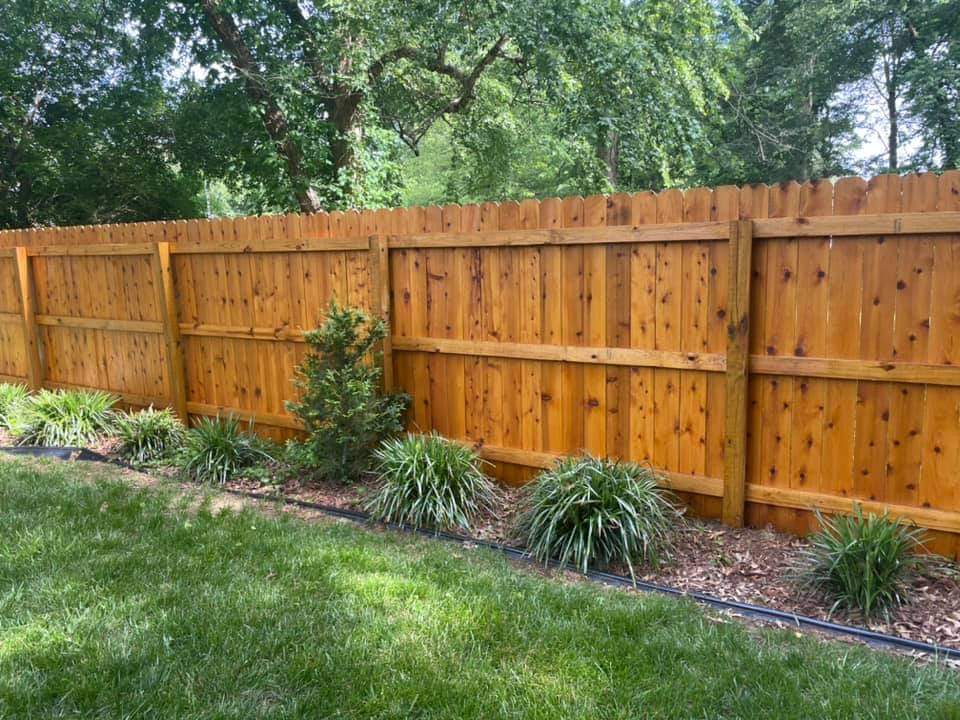Fencing Discoloration 101: Whatever You Need to Know for a Magnificent Finish
When it concerns improving the visual allure and extending the lifespan of your fencing, staining is a vital aspect that demands attention to detail. The process of fence discoloration involves even more than just picking a color and applying it carelessly. From selecting the ideal kind of discolor to carefully preparing the surface and performing the application technique, every step plays a considerable role in accomplishing a flawless coating. By recognizing the fundamentals of fence staining, you can boost the look of your outside space and guarantee the defense of your fence versus various components.
Picking the Right Discoloration
Identify the type of wood your fencing is made of, as various timber varieties respond in different ways to different discolorations. Some stains might require more regular reapplication than others, so choose a stain that straightens with your maintenance preferences. By taking these variables into account, you can pick a discolor that not only protects your fencing however also enhances its overall appearance.
Preparing Your Fence
Prior to using the chosen stain to your fencing, it is necessary to appropriately prepare the surface area to make sure optimal outcomes and longevity. The very first action in preparing your fence is to cleanse it thoroughly.
Sanding the fence is the following crucial step to make sure a smooth surface area for the tarnish to adhere to. Make use of a medium-grit sandpaper to eliminate any type of harsh spots or old stain that may be peeling off.
Lastly, secure any type of locations you do not desire to stain by using painter's tape and plastic sheeting - Fence Staining - Fence Staining. This will guarantee clean lines and stop unintended staining of other surface areas. Effectively preparing your fencing will certainly not only enhance the last look but likewise add to the longevity of the discolor

Applying the Spot
To accomplish a specialist finish when tarnishing your fence, make sure that you apply the discolor in also strokes adhering to the wood grain direction. Before beginning, tremble or mix the discolor completely to blend any kind of worked out pigments. Utilizing a top notch brush or a paint sprayer, start using the discolor from the top of the fencing, working your method down to avoid drips.
Operate in workable sections to preserve a damp edge and avoid lap marks. If making use of multiple canisters of stain, blend them with each other to guarantee color uniformity. Watch out for any drips or runs and smooth them out quickly. After completing the whole fencing, enable adequate drying out time based on the manufacturer's guidelines before applying a 2nd coat if desired. Proper application is crucial to attaining a stunning and long-lasting coating on your fencing.
Tips for a Specialist Finish
Achieving a professional finish on your stained fence calls for precise attention to detail and adherence to ideal methods in application methods. Tidy the fence of any kind of dust, particles, or old stain making use of a pressure washer or a tight brush and soapy water. Select a top quality stain that is appropriate for your fencing type and climate problems.
When it comes to applying the discolor, use a brush, roller, or sprayer for an also and constant layer. Operate in workable sections to stay clear of drying out lines and overlap wet sides to avoid lap marks. Pay special interest to edges, sides, and hard-to-reach areas for uniform insurance coverage. Allow the tarnish to dry entirely according to the supplier's guidelines prior to considering a second layer. Complying with these tips will assist you accomplish a specialist surface that improves the appeal and long life of your fencing.
Upkeep and Care
Ensuring normal maintenance and appropriate treatment of your discolored fencing is important for protecting its appearance and structural honesty in time. To preserve the spectacular coating accomplished through discoloration, it is suggested to evaluate the fence at the very least as soon as a year for any indications of wear, damages, or discoloration. Addressing issues without delay can avoid them from intensifying and needing more substantial fixings.
Regular maintenance tasks consist of cleaning the fencing with a moderate cleaning agent and water to eliminate dirt, crud, and see this mold that can accumulate over time. Furthermore, trimming any type of greenery that comes right into contact with the fence can stop damages from overgrowth. Examine the tarnish for signs of fading or wearing away, and think about applying an upkeep coat every 2-3 years to keep the fence looking fresh and vibrant.
Proper treatment likewise entails shielding the stained fencing from rough components by considering factors such as sunlight direct exposure, dampness, and temperature variations - Fence Staining Service. Applying a protective sealer can even more improve the longevity of the discolor and protect the timber from environmental damages. By adhering to these upkeep techniques, you can make sure that your discolored fencing remains a stunning and long lasting asset to your residential or commercial property for many years ahead
Conclusion
